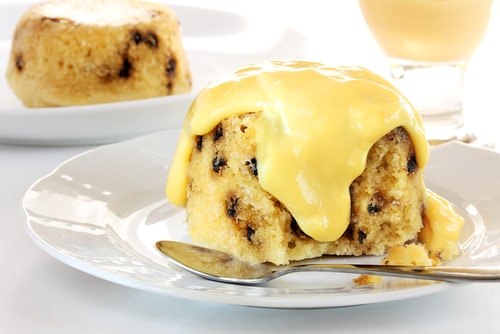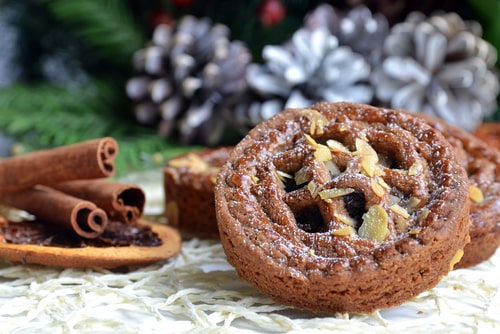Last updated on March 19th, 2020
10 Interesting English words
41. SWIMS is the same upside down!
42. Catawampus is a word! It means awry, like a kitty corner is…
43. ‘Squirrel’ comes from a Greek word meaning ‘shadow tail’!
44. ‘Billowy’ is the longest non-scientific English word to have its letters in alphabetical order.
45. The letter X is not a new symbol for a kiss in text messages. It was first used in a 1763 letter from Gilbert White, who was a naturalist.
46. Clue once meant a ball of thread – now it is something that can lead you out of a maze. Does it ring a bell?
47. If several years ago you heard Gardyloo on the streets of Edinburgh, it was a warning that slops of toilet were about to be thrown from the window overhead. Thankfully, those days are long gone.
48. The word ‘daisy’ is shortened from ‘day’s eye’ because the daisy opens and closes with the day.
49. The word ‘girl’ once meant a child or young person of either sex!
50. Taradiddle is a word that has been a favorite of many writers, from Balzac to G.K. Chesterton and even J.K Rowling. We don’t know where this word for ‘unpretentious nonsense’ came from, but there is a myth that it was born in the Irish town of Taradiddle, which doesn’t really exist!
10 Facts about food in England
51. Toad in the Hole looks and tastes much better than it sounds. It is simply sausages in Yorkshire pudding, named so because apparently (to some) it looks like toads popping up from a hole.

52. You can also eat ‘spotted dick’ in England, and snigger while you eat. This is a dried fruit and suet pudding popularly served with custard in Britain. The word ‘dick’ doesn’t mean what you think it means! It may just be a corruption of ‘pudding’.
53. Welsh Rabbit or Rarebit is nothing but melted cheese on toast – the original name is really a silly and patronizing dig at the Welsh.
54. You can eat Bletted Medlars in England. Sounds strange, and even stranger, it is made by letting medlars (a small apple-like fruit) rot. The odd thing is, the rotted fruit is really delicious!
55. Cullen skink is nothing odder than a thick haddock, onion and potato soup originally from the Scottish town of Cullen.
56. Stargazey pie is an odd invention – a pie with pilchard heads and tails poking out of the pie crust into the sky. It is a traditional Cornish Christmas meal.
57. Ever tried singing hinnies from Northern Britain? They are nothing but current cakes that sizzle or ‘sing’ on the griddle whey are cooked. They are ‘hinnies’ because it is a term used for loved ones.

58. Many Roman Roads in Britain have cherry trees along the way. The story goes, they sprouted from the cherry stones spat by soldiers!
59. Garlic crowdie is a delicious Scottish cheese seasoned with garlic.
60. When in England, you can eat ‘love in disguise’ – just a fancy name for stuffed hearts of cows and pigs!
10 Facts about Christmas in England

61. It was actually illegal to eat mince pies on Christmas day in the time of Oliver Cromwell! The purpose was to control gluttony.
62. Christmas dinners often feature ‘devil on horseback’ on the table – dates or prunes wrapped in bacon.
63. London has seen only 10 white Christmases since 1900…
64. The traditional Christmas plum pudding may actually have been derived from suet meat puddings with dry fruits.

65. The Queen’s Message on Christmas day is not an old tradition. King George V started it in 1932 when he read a speech by none other than writer Rudyard Kipling.
66. Boxing Day is not just a bank holiday in England. It is the day you share Christmas leftovers with friends and neighbors. In the past, masters shared leftovers in the form of boxes with servants.
67. The Scottish may have a Clootie Dumpling instead of the Christmas Pudding for dessert on Christmas Day.
68. It used to be a New Year tradition in Wales to decorate a horse’s skull with white sheets and bells.
69. Mummering is a tradition in which people wear masks or paint their faces and perform plays in the community. Mummers may also visit houses like carolers used to do.
70. Hogmanay (or New Year’s Eve) celebrations in Scotland are bigger than Christmas celebrations, and strangers are considered auspicious if they enter the house on that day.
5 Facts About England in 1600s
71. In the 1600s, London was separate from Westminster but then rich people built houses on the Thames between the two cities.
72. In 1666 the Great Fire of London destroyed much of the city because of a fire that may have started in a bakery. Nearly 100 years ago, a Daniel Baker had predicted that London would be destroyed by a ‘consuming fire’.
73. The Bank of England that we know today was founded in 1694.
74. The Gunpowder Plot of 1605 that led to the Guy Fawkes Day celebrations of today was a failed plot by Catholics including Guy Fawkes to blow up Stuart King James I, who was not tolerant of Catholics. But some say the plot was a bigger conspiracy.
75. King James I proposed one flag for the joining of Scottish and English crowns, and the King James’ Union Flag was designed, which is now known as the Union Jack.
England – country at a glance
| Capital City | London 51°30′N 0°7′W |
|---|---|
| Largest City | London 51°30′N 0°7′W |
| Land Area | 50,301 sq mi |
| Population | 69,651,674 (2015 est.) |
| Official Language | English |
| Borders | Scotland and Wales |
| Currency | Pound sterling (GBP) |
| Religion | Christianity (Church of England) |
| Average Life Span | 81 Years (2012) Life expectancy at birth indicates the number of years a newborn infant would live if prevailing patterns of mortality at the time of its birth were to stay the same throughout its life. |
| Time Zone | GMT (UTC) Summer (DST) BST (UTC+1) |
| GDP | $3.087 trillion (estimate 2016) |
| Calling Code | +44 |
| Drives on the | Left |
